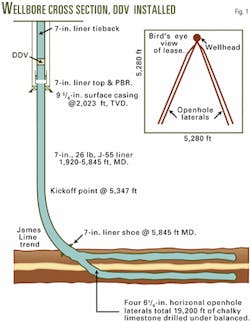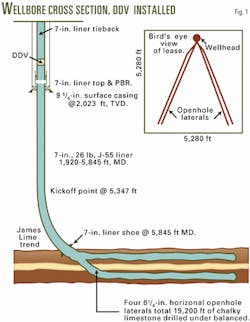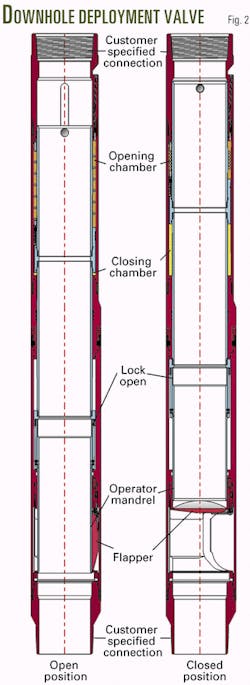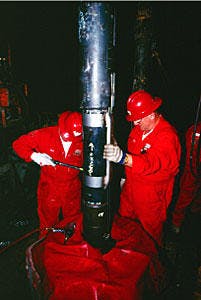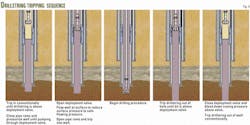Pinnacle Operating Co. Inc., Shreveport, La. successfully used a new downhole deployment valve in an underbalanced drilling application to avoid formation damage, save rig time, and minimize drilling fluid costs in its Whitney 19 No. 1, North Louisiana sweet gas well, drilled in the James Lime trend.
Underbalanced drilling is a specialized drilling technique in which the bottomhole pressure exerted by the hydrostatic head of the wellbore fluid column is less than the pressure of the formation being drilled.
The downhole deployment valve (DDV) allowed rig personnel to trip the drillstring out of the well twice, during and following underbalanced drilling operations for the horizontal laterals, without pumping kill fluids to control 3,400-psi reservoir pressure.
Well design
The operator designed the well with 95/8-in. surface casing to 2,034 ft TVD. The rig drilled the well vertical to a kickoff point at 5,347 ft, then built angle to 70° at 5,845 ft measured depth, just above the chalky limestone reservoir (Fig. 1).
Crews ran a 7-in., 26 lb, J-55 liner from 1,920 to 5,845 ft, with a polished-bore receptacle (PBR) at the liner top. The rig then installed the 5,000-psi rated DDV, supplied by Houston-based Weatherford International Inc., on 7-in. casing to a depth of 1,875 ft (Fig. 2).A seal assembly, below the DDV, landed and sealed into the PBR at the top of the 7-in. liner to prevent well pressure and effluent from entering the 7 x 95/8-in. casing annulus (Fig. 1). Dual control lines, in the casing annulus, connected the DDV to a surface control panel for pump open, pump-closed operation (Fig. 3).
Underbalanced drilling
As planned, the operator drilled four approximately equal length, near-horizontal 61/8-in. laterals in the chalky limestone reservoir, totaling 19,200 ft drilled. The operator drilled all four laterals from the single 7-in. casing shoe, leaving all of them open hole.
The rig drilled two laterals in the southeast (152° azimuth) and two laterals southwest (200° azimuth). In each direction, two laterals penetrated the upper and lower lime members, separated by about 40 ft TVD.
Crews successfully operated the DDV twice during the 14-day underbalanced drilling operation, once to change the bit and mud motor after drilling 11,500 ft of the laterals, and the second time to pull out of hole upon completion of the entire 19,200-ft lateral length (Fig. 4).
The DDV isolates the reservoir section from the rest of the hole during tripping operations and allows the operator to complete the well in an underbalanced condition. This can save rig time, eliminate the need for snubbing drill pipe into the hole under high pressure, and limit the exposure of the reservoir to an overbalanced condition.
DDV recovery
Once the horizontal laterals had been drilled, the operator pulled the top 7-in. casing, replacing the DDV with a short 7-in. sub and rerunning the 7-in. as a tie back liner. The operator then completed the well with 23/8-in. tubing.
To accomplish this, crews ran a completion packer, with pump-out plug, on wireline and set it in the 7-in. liner at 5,320 ft. For a second shut-off, the operator set a bridge plug at 1,972 ft, which allowed the rig to trip the 7-in. casing and PBR seal assembly, removing the DDV from the hole.
After removing the DDV, crews then pulled the bridge plug at 1,972 ft and ran 23/8-in. production tubing and landed it in the packer at 5,320 ft, making the well ready for production.
